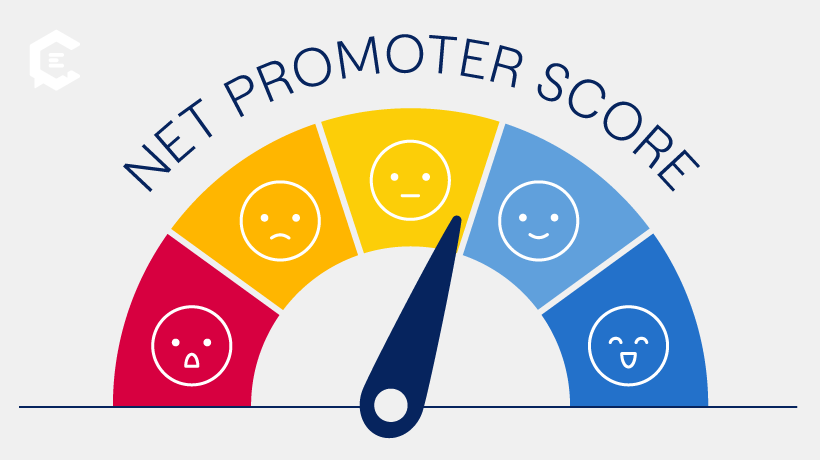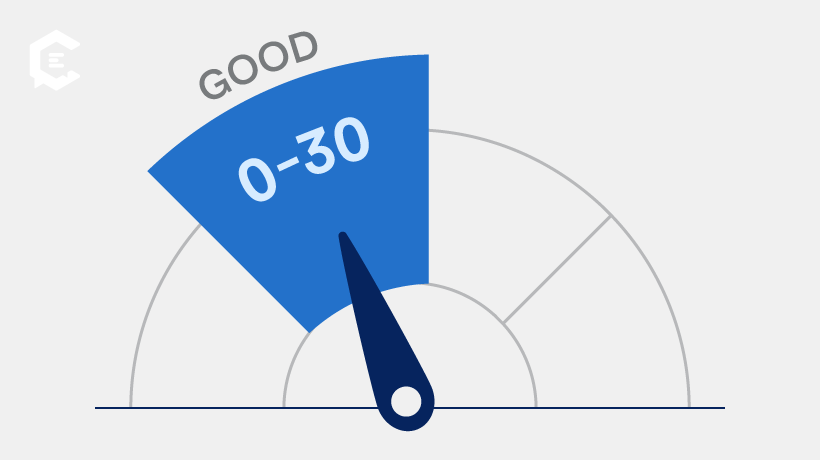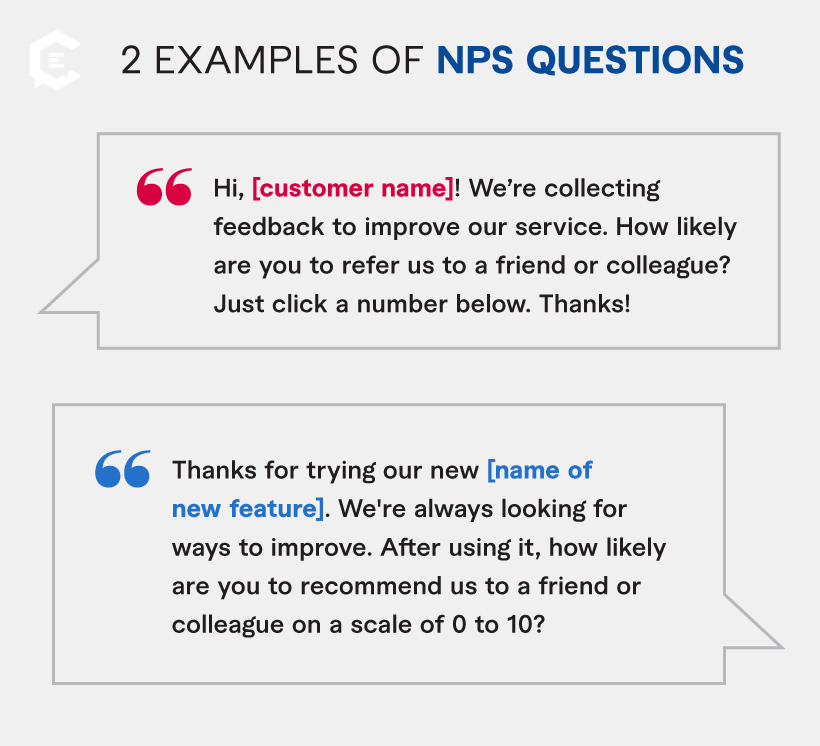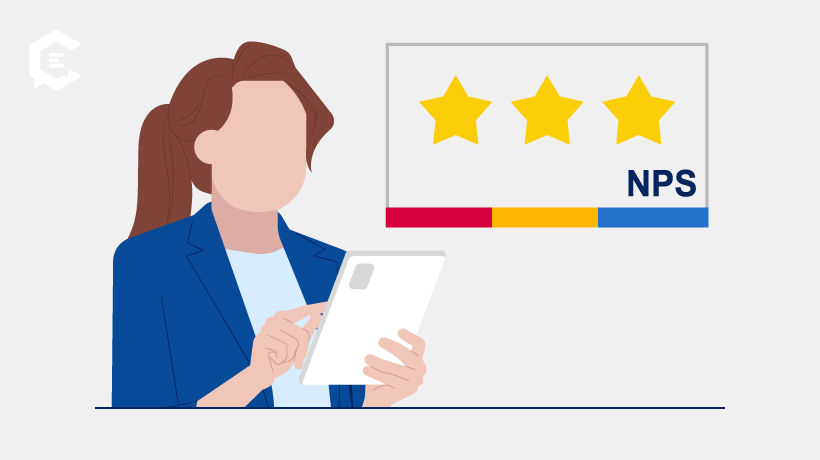Customer acquisition is getting more expensive — and retention isn’t getting any easier. But there’s one metric that can help you improve both: your Net Promoter Score (NPS).
NPS doesn’t just measure customer satisfaction. It gives you insight into loyalty, areas of improvement, and new opportunities for growth.
In this article, you’ll learn what NPS is, how to calculate it, and how to use it to strengthen your marketing and customer experience strategies.
What Is a Net Promoter Score?
An NPS score is a metric that measures a customer’s willingness to recommend a product or service to their friends and family. It’s commonly used to gauge customer satisfaction and brand loyalty, because if people are willing to recommend you, chances are they’re happy with their experience.
To collect this data, you ask customers a simple question: “On a scale from 0 to 10, how likely are you to recommend [product or service] to a friend or colleague?”
Based on their response, customers fall into one of three groups:
-
Detractors (0–6): Unhappy customers who may speak negatively about your brand
-
Passives (7–8): Neutral customers don’t have a strong opinion about your brand
-
Promoters (9–10): Loyal fans who are likely to recommend you to others
Once you have the responses in hand, it’s time to calculate the score.
How to Calculate NPS
To calculate your NPS, you first determine the percentage of detractors, passives, and promoters. You then plug the total percentage of detractors and promoters into this NPS formula:
NPS = % Promoters − % Detractors
Passives are excluded from the calculation. Your final score will range from –100 to +100, with higher scores indicating stronger customer loyalty and satisfaction.
NPS Score Example
For instance, let’s say you get responses from 100 customers:
-
50% gave you a 9 or 10 (Promoters)
-
30% gave you a score between 0 and 6 (Detractors)
-
20% gave you a 7 or 8 (Passives) (not used in the final calculation)
Using the Net Promoter Score formula, here’s how you’d figure out your score:
NPS = 50% − 30% = +20
So, your Net Promoter Score is +20.
What Is a Good NPS Score?
A “good” NPS score largely depends on your industry, since customer expectations vary widely across sectors. But as a general benchmark, anything from zero to 30 is typically considered good. However, a score close to zero only tells you you have more promoters than detractors, so that leaves a lot of room for improvement.
According to SurveyMonkey, the average NPS score is 32 across all industries.
Here’s how that breaks down by industry:
- Construction: 64
- Consulting: 48
- Education: 60
- Finance: 59
- Government: 62
- Healthcare: 62
- Insurance: 65
- SaaS and online services: 44
So, if you’re managing marketing for a SaaS company, you want the percentage of your promoters to be at least 44% higher than your percentage of detractors. For a finance company, the bar is much higher at 59%.
How to Collect NPS Feedback
The best time to send an NPS survey is immediately after a key interaction because it reflects how the customer feels at that moment. Here’s when and how to ask for the best results.
When to Ask
Send your NPS survey right after moments that matter, such as:
- A purchase or order confirmation
- After a service has been delivered
- Milestones in a subscription (e.g., at 3, 6, 9, and 12 months)
- After using a new product feature or service
The key is to use your NPS survey question as more than just a way of measuring customer loyalty. When asked at the right time, it doubles as a way to assess the performance of products, your service representatives, and tools.
Where to Ask
Make it easy for customers to respond by placing your NPS question in convenient, low-friction channels:
- SMS message — great for mobile-first customers
- Pop-up on your website or app that is triggered right after an action
- Chatbot conversation (include the survey at the end of a support session)
- QR code on product packaging that links directly to a feedback form.
Net Promoter Score Question Examples
To get more responses, keep it brief and be transparent about why you’re asking for feedback. You can also personalize the question by adding the customer’s name.
An incentive, such as a modest discount, can also encourage more responses.
Here are some examples of NPS questions:
- Hi, [customer name]! We’re collecting feedback to improve our service. How likely are you to refer us to a friend or colleague? Just click a number below. Thanks!
- Thank you for using our chatbot, [customer name]. To help us improve, please choose a number between 0 and 10 to score how likely you are to recommend us to a friend or colleague.
- Thanks for trying our new [name of new feature]. We’re always looking for ways to improve. After using it, how likely are you to recommend us to a friend or colleague on a scale of 0 to 10?
4 Ways to Use NPS in Your Marketing and Product Development
NPS data isn’t something you want to let sit in your toolbox and collect rust. There are several ways it can inform your marketing strategy and product development.
1. Reach Out to Promoters Using Referral Campaigns
If someone gives you a score of 9 or 10, ask them to participate in a referral campaign. Reach out immediately via email, phone, or SMS.
The offer should be simple and provide a tantalizing benefit, such as a discount on their monthly subscription or a discount on their next purchase for every new customer they refer.
2. Improve Your Products or Services Based on Feedback
NPS data can go a long way toward improving products and services because it provides clear insights into how your offerings are perceived by customers. This makes NPS data crucial for optimizing products or boosting subscription revenue.
For instance, say you added a new payment method to your e-commerce site. If your NPS scores go up significantly after rolling out the new feature, that’s a clear message. Additional payment methods improve convenience, customer satisfaction, and the likelihood of getting more customer referrals.
3. Fine-Tune Your Customer Service
NPS data is a powerful tool for evaluating and improving customer service because it provides data directly from your audience.
For example, suppose you want to better understand the effect of a new customer service chatbot. First, collect NPS scores after support interactions for a few months before launching the chatbot. Then, continue collecting NPS but compare the results.
If post-chatbot scores improve, it may indicate the chatbot is effectively meeting customer needs. If scores drop, it may be time to optimize its performance.
4. Identify Pain Points of Detractors
When a detractor submits a low score, follow up to ask them why and offer ways to make it up to them. Their answer can shed light on pain points you need to address.
For instance, after someone submits a score between 0 and 6, you can follow up with, “We’re sorry we fell short. Could you please describe why you’re dissatisfied?”
While analyzing customer responses, look for trends, such as the same issue popping up again and again. Then, strategize ways to address it.
Top NPS Tools
Ready to get started with NPS surveys? Here are some popular options:
- SurveyMonkey offers NPS features that cover the entire process, from creating and distributing surveys to analyzing the results.
- Hotjar includes NPS-specific tools for building questions, sending follow-ups, and tracking feedback over time.
- Delighted is built specifically for NPS and includes tools to customize surveys to match your brand and goals.
- AskNicely focuses on clean, user-friendly interfaces that make it easy to collect more NPS responses.
Put Your NPS Score to Work for You Today
Your NPS score does much more than measure customer satisfaction. It provides invaluable insight that helps you improve products, build referral campaigns, and refine services.
Think of your NPS score as a window into what your customers value most. And use it to improve the customer journey from start to finish.
At ClearVoice, our freelance writers, content strategists, and SEO pros can help you:
-
Translate NPS feedback into helpful blog topics, case studies, and testimonials
-
Align content with your highest-rated customer touchpoints
-
Highlight promoters in success stories and referral-driven content
Connect with a content specialist today to learn more.







